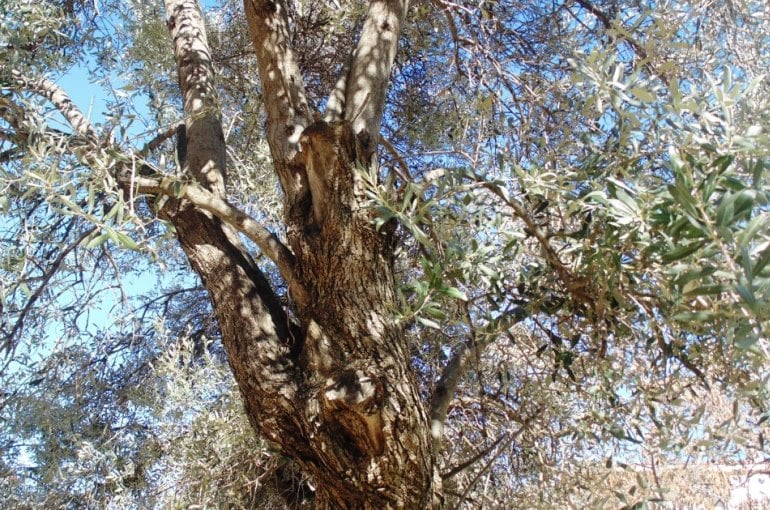Olive Tree Diseases and Pests

This post is also available in:
This post is also available in:
![]() Español (Spanish)
Español (Spanish) ![]() Français (French)
Français (French) ![]() Deutsch (German)
Deutsch (German) ![]() Nederlands (Dutch)
Nederlands (Dutch) ![]() العربية (Arabic)
العربية (Arabic) ![]() Türkçe (Turkish)
Türkçe (Turkish) ![]() 简体中文 (Chinese (Simplified))
简体中文 (Chinese (Simplified)) ![]() Italiano (Italian)
Italiano (Italian) ![]() Português (Portuguese (Brazil))
Português (Portuguese (Brazil)) ![]() polski (Polish)
polski (Polish)
Most olive tree diseases are caused by bacteria, viruses and fungi.
Crown Gal
Crown Gal is caused by the bacterium Agrobacterium tumefaciens and it usually concerns young trees. The most common symptom is tumors that appear in the roots, just above or below the soil line. Infected trees with many galls will gradually become unable to transfer water and nutrients to the upper parts of the tree. As a result, they slowly become weak and they finally die. The bacterium can survive for many years in the soil.
Verticillium
Verticillium is a very serious fungal disease, caused by Verticillium dahliae. In a few words, the first symptoms of Verticillium is that the olive leaves start to curl and discolor. The infection then spreads to the other parts of the tree (root system), and after a few years it may result in the death of the tree. The pathogen may live in the soil (as spores) for 20 years or more. Thus, olive tree growers must be very careful when choosing the field where they will plant the young olive trees. They can avoid soils where tomato, potato or other vegetables were previously planted, as these crops are also susceptible to verticillium (ask a licensed agronomist in your area).
Other olive tree diseases are Cercospora leaf spot, Peacock spots and Olive anthracnose.
Dacus oleae (Olive fly)
The olive fly (Dacus oleae) hits mainly the olive trees in the Mediterranean region and can diminish the olive production in a few weeks. Dacus oleae is actually a small fly that is only fed by olives. The main symptom is dark spots that appear in the flesh of the olive fruit. This is where the hole is made and the eggs are laid. Dacus oleae is a very serious problem for olive farmers, because not only does it destroy completely on average 50-60% of the production, but it also affects the quality of the remaining 40%. The acidity of the olive oil is highly increased and in most cases it cannot be marketed for human consumption. In most countries, hydrolyzed baits are used to prevent the population increase of olive fly.
You can enrich this article by leaving a comment or photo of your olive trees pests and diseases.
1.) Olive Tree Information & Uses
3.) Are Olive Farms profitable?
4.) Olive Tree Alternate Bearing
5.) Olive Tree Propagation & Pollination
6.) Olive Tree Climate – Temperature Requirements
7.) Olive Tree Soil Requirements
9.) Olive Tree Fertilizer Requirements
10.) Olive Tree Water Requirements
13.) Olive Trees Diseases and Pests
Do you have experience in Olive Tree cultivation? Please share your experience, methods and practices in the comments below. All the content you add will be soon reviewed by our agronomists. Once approved, it will be added to Wikifarmer.com and it will influence positively thousands of new and experienced farmers across the world.








































































